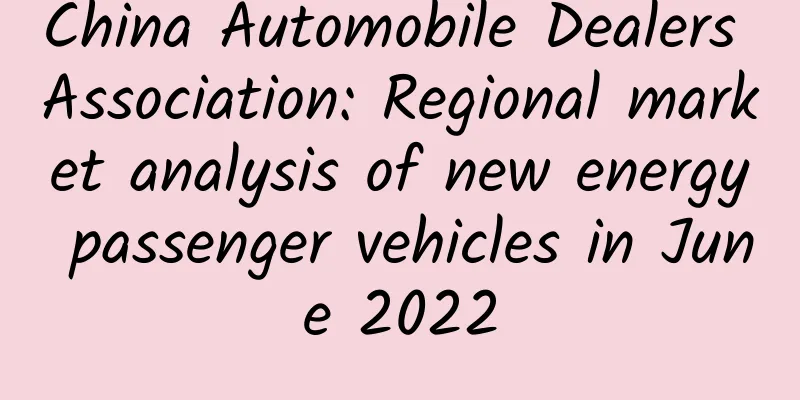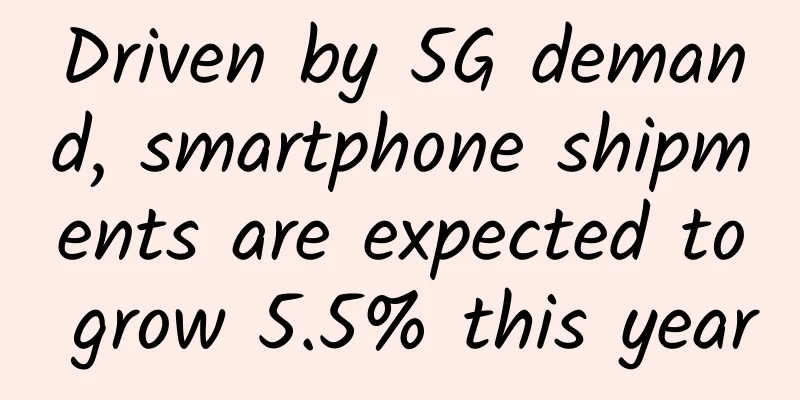China Automobile Dealers Association: Regional market analysis of new energy passenger vehicles in June 2022

|
According to the China Passenger Car Association's new energy vehicle retail data, wholesale sales of new energy passenger vehicles reached 570,000 units in June , up 141% year- on-year and 35% month -on-month. Under the policy of halving the vehicle purchase tax, new energy vehicles were not only not affected, but also improved more than expected month-on-month. The supply improvement and the expectation of rising oil prices have brought a hot market. The rising oil prices and the locked electricity prices have driven the hot performance of electric vehicle orders. The month-on - month trends of new energy vehicles and traditional fuel vehicles in June were significantly driven by policies. Local governments have introduced strong policies to encourage consumption. Some subsidies and consumer voucher policies are first-come, first-served or expire at the end of June , further boosting the hot car market in June . In recent months, the new energy vehicles of mainstream domestic automakers have been performing increasingly well. Among the top eight new energy passenger car companies, except Tesla, all are new energy vehicle brands of mainstream automakers. Compared with the weak performance of traditional automakers in new energy vehicles in the past two years, the transformation effect of the coordinated development of fuel vehicles and new energy vehicles of the main passenger car companies in June was very prominent . 1. New energy vehicle wholesale was strong in June In June, the wholesale sales of new energy passenger vehicles reached 570,000 units, a year-on-year increase of 141% and a month-on-month increase of 35%. Under the policy of halving the vehicle purchase tax, new energy vehicles were not only not affected, but also improved more than expected month-on-month. From January to June, the wholesale sales of new energy passenger vehicles reached 2.46 million units, a year-on-year increase of 122%. From January to June , the wholesale volume of new energy passenger vehicles reached 2.46 million, a year-on-year increase of 122% . In the future, when the supply improves, further stimulus measures will be implemented to recover the sales losses. Since the beginning of this year, the price of power batteries has increased much faster than the industry expected due to the rising prices of raw materials such as lithium and nickel. Therefore, car companies are under great pressure after the price increase of power batteries and can only ease the cost pressure by raising prices. The impact of the current two rounds of new energy vehicle price increases is not obvious for the time being. First of all, the sales model of new energy vehicles is order sales. At present, various car companies have a large number of orders before the price increase, resulting in the digestion of previous orders from March to May . In June , the consumption promotion policies of various regions have been promoted, and the current new energy sales are further hot. Secondly, the new energy plug-in hybrid has diverted the fuel vehicle market, and high oil prices have increased the advantages of new energy. Under the current high oil prices, the cost performance of new energy vehicles has been significantly improved, but the traditional vehicle market has become more difficult. The third reason is that consumers have strong rigid demand for new energy vehicles and relatively low price sensitivity, so small price changes will not significantly affect consumer demand for new energy vehicles. The fourth reason is that the order price of new energy vehicles was locked before the price increase, resulting in a locked-in price for early orders, which led to a new situation in which more consumers were rational or followed suit to rush to order. Car companies have also taken measures to regulate the order of suspected scalpers. 2. New energy vehicle retail sales grew strongly in June According to the retail data of the China Passenger Car Association, the domestic sales of new energy passenger vehicles from January to June reached 2.24 million, a year-on-year increase of 121% . The annual cumulative growth rate has not fallen rapidly from a high level. This year is a subsidy adjustment, so there is no obvious change in demand for new energy vehicles after the adjustment. 3. Usage characteristics of new energy passenger vehicles The proportion of new energy passenger car rental and leasing gradually increased from 2017 to 2019 , and then the proportion of pure electric rental and leasing continued to decline from 2020, falling to 9% in 2022. Due to insufficient supply in the private market, the proportion of pure electric rental and leasing in June 2022 was 10 % , a slight decrease. Recently, the private market share of plug-in hybrids has continued to increase, while the demand for plug-in hybrids for rental has continued to decline. Pure electric vehicles are still the best choice for rental. Most of the pure electric passenger cars of a corporate nature are used for rental purposes. There is not much market for new energy passenger cars for other purposes, or the market is gradually shrinking. This is also the trend of new energy passenger cars turning to private demand due to the reduction of subsidies. In the non-operating market, the individual market accounted for 78% in 2021 , which was a strong performance, and the individual market accounted for 81% in 2022 , further forming a high growth in the private market. Unit use continued to decline to 10% . The recent market for new energy passenger vehicles is a market with huge fluctuations. At the beginning of 2020 , the rental electric vehicle market continued to be sluggish due to the impact of the epidemic. Among them, the rental market affected by the epidemic was hit hard and is still poor recently. The proportion of rental electric passenger vehicles in June fell to 10% , which is in line with the structural changes of continued growth in private consumption. 4. Regional market performance is gradually improving In the past few years, the demand for new energy passenger vehicles was strong mainly in megacities with purchase restrictions, but has continued to decline recently. From January to June 2022 , new energy passenger vehicles accounted for 20% of total sales in megacities, down 9 percentage points from 2021. Shanghai suffered a large loss, which also shows that the sales growth rate of new energy vehicle market in cities with purchase restrictions has gradually slowed down, and purchase restrictions have constrained demand. The recent new energy market in counties and towns has gradually started. The recent growth of new energy vehicles in the mid-to-large vehicle market reflects the good market expansion of mid-to-high-end new energy vehicles, while new energy vehicles in the county and township markets are also gradually expanding. The sales trend of new energy vehicles in large cities without purchase restrictions is not strong. 5. The performance of the new energy urban market is gradually improving The main growth of new energy vehicles in June was in the hardest-hit areas of the epidemic that were suppressed in the early stage. The restricted purchase cities such as Hangzhou, Shenzhen, Guangzhou, and Shanghai still performed well. The main growth of new energy vehicles in June also included large cities without purchase restrictions such as Chengdu and Suzhou. The current market growth is in big cities like Chengdu and Chongqing. The performance of cities with purchase restrictions is differentiated, and currently the promotion areas in special regions such as Shanghai have seen a significant decline. From January to June 2022, there was a significant increase across the board compared to the same period in 2021. The growth in Chengdu, Foshan, Chongqing, Suzhou, Guangzhou and other cities was relatively rapid, especially Chengdu, where the increase reached 46,000 units, forming the core driving force for the increase. The Chengdu market is also a unique environment for new energy vehicles to show high growth. Products with high appearance and low use costs have great potential in the southwest region. Hangzhou, Shenzhen, Guangzhou and other cities with purchase restrictions have relatively strong performance, which is also the incremental contribution of high-end models. The pure electric market share of new energy vehicles has declined slightly recently, falling to 79% of the total in January-June 2022. Due to weak demand in Shanghai, pure electric vehicles performed strongly in the super-large market, accounting for 15% of pure electric vehicles. The overall performance of plug-in hybrid vehicles in megacities, small cities, and county and township markets is relatively low. 6. Regional differences in demand for pure electric vehicles The gradual start of the private household market has promoted the development of the industry. Although the demand in large cities with purchase restrictions is very strong this year, its share has gradually decreased, the market share of large cities with traffic restrictions has continued to rise, and the private consumption market in small and medium-sized cities has gradually recovered. At present, the performance of the pure electric vehicle rental market is gradually recovering. In 2019, the proportion of rental and leasing in pure electric vehicle sales reached its peak. Then, in 2020, the proportion of rental and leasing gradually declined, and in 2022, the performance dropped to around 13%. The proportion of rental cars in megacities has declined, while the private market is still recovering rapidly. The rental market in cities with purchase restrictions is still the core force this year. 7. Regional demand for plug-in hybrid passenger vehicles The rental share of plug-in hybrid vehicles continues to shrink, and in 2022 the share dropped sharply to around 1%. The main demand for rental models is in megacities and large cities. This year, the number of plug-in hybrid rentals in megacities has shrunk significantly. The private consumption market for plug-in hybrid models has great potential for growth, and there is good demand in both small and medium-sized cities. Plug-in hybrids strengthened in June, and large and medium-sized cities with or without purchase restrictions are still the main force of plug-in hybrids. The demand in cities with purchase restrictions has been greatly affected by the epidemic, and plug-in hybrids in county and township markets have not yet been fully and effectively promoted. BYD Han and other models have a high degree of dependence in cities with purchase restrictions. Low-priced plug-in hybrids such as Qin and Song perform well in small and medium-sized cities. 8. Regional penetration of electric passenger vehicles – June At present, the proportion of pure electric vehicles in cities with purchase restrictions has increased significantly, from 10% in 2019 to 32% in 2022. The sales share of pure electric vehicles of new energy vehicles in large cities, medium-sized cities and small cities without purchase restrictions is basically the same, both at a relatively low level in 2019 and 2020. In June this year, it rose to 22% in medium-sized cities, and the penetration performance in county and township markets is also strong. 9. In June, the companies in each regional market were highly differentiated The performance of the rental markets in various regions varies greatly. In June this year, the rental markets with strong performance were Chengdu, Shenzhen, Beijing, Guangzhou, Hangzhou, Chongqing, etc. The performance of various manufacturers in the rental markets in various regions also varies greatly. In some regions, the market share of local products in the local rental market is not necessarily very high. For example, in the Shenzhen market and Chongqing market, foreign brands performed relatively well this year. The private pure electric vehicle market has relatively distinct characteristics, and the trend towards high-end is extremely obvious. BYD performed well, ranking first in almost all regions except Guangzhou. Leapmotor and other companies are relatively strong in Tianjin, while SAIC-GM-Wuling in Zhengzhou and other regions are mostly high-end. New car manufacturers NIO and Xpeng Motors have performed very well. At the same time, NIO has become the second in the high-end market of pure electric vehicles, and Xpeng Motors has also performed well, while traditional car manufacturers have not performed well in the private market. BYD and Li Auto performed well in the private plug-in hybrid market. BYD's main cities are almost leading. Li Auto performed well in Beijing, Zhengzhou, Chongqing, etc. SAIC Passenger Cars also performed well. The plug-in hybrid performance of joint venture automakers is relatively weak, and the performance of BMW and Volkswagen Group China and Volkswagen Group China is average. 10. Beijing market trends The trend of the new energy vehicle market in Beijing in 2022 was relatively stable, with sales reaching 18,000 units in June 2022, slightly higher than the same period last year. However, Beijing's sales in January 2022 were much lower than last year, and the cumulative sales from January to June increased by 23% year-on-year, which was average. Since the new energy vehicle quotas became relatively tight in 2018, the Beijing new energy vehicle market in 2022 has been in contrast to the national trend. This is the effect of suppressed consumption caused by the rhythm of quota issuance. Beijing's new energy vehicle sales in June were relatively good, and considering the lack of indicators, the performance in June was also stable. Beijing's new energy vehicle grades are generally pragmatic, which is also a reflection of the good household demand. 11. Trends in Shanghai’s new energy market The new policy trend in the Shanghai market is in sharp contrast to that in the Beijing market, which has been extremely stable since 2019. Starting from June 2020, Shanghai's new energy vehicles have shown a small explosive growth feature. In June 2022, sales of new energy vehicles in Shanghai reached nearly 30,000 units, a significant increase compared to 21,000 units in June last year. The losses suffered by Shanghai's new energy vehicles due to the epidemic in June should be able to recover significantly. 12. Market trends of new energy passenger vehicles in restricted cities New energy vehicles performed relatively well in restricted cities. In January 2022, the sales of passenger cars in restricted cities reached 77,000 new energy vehicles, and in June it reached 127,000, with a year-on-year growth rate of 1.6 times. In addition, the cumulative sales of new energy vehicles from January to June reached 545,000, a year-on-year growth of 158%, which is much higher than our overall auto market growth and higher than the average growth rate of our overall new energy vehicles, reflecting the relatively high enthusiasm of restricted cities to buy new energy vehicles under the epidemic. 13. Market trends of new energy passenger vehicles in areas with no purchase or driving restrictions Non-double-restricted cities refer to areas where there are no restrictions on the purchase and use of fuel vehicles. Since there are no restrictions on the purchase and use of traditional vehicles, the demand for new energy vehicles in these cities is the real market demand. At present, the number of non-double-restricted cities is also growing rapidly. This type of city is relatively large in the country, and the sales of new energy vehicles are also at a relatively high level. In 2022, new energy vehicles performed extremely well in cities without dual restrictions, with sales of 170,000 units in January, a strong growth rate, a growth rate of 183% in March, and sales of 263,000 units in June, a growth rate of 172%, and a performance of 172% higher than the sales in March. Overall, the cumulative sales from January to June reached 1.14 million units, a year-on-year increase of 155%, showing a strong growth feature. Cities without purchase restrictions and driving restrictions, which were not greatly affected by the policies that were worried about in the early stage, have become the main force in sales and growth. All kinds of regions in the country have the characteristics of strong growth in demand for new energy vehicles. Combined with the demand in cities with driving restrictions, regional market demand will maintain strong growth in 2022. |
<<: The king of volume kings, value first, the dark blue SL03 is priced at 145,900-191,900
Recommend
Wolf Warriors | How to Tame a Wolf
Author: Li Lu and Wu Cunshuang, Chief Pharmacists...
Event operation: How to attract new customers at zero cost?
Today I would like to share with you a growth act...
Tik Tok brand self-broadcasting channel building strategy!
My core point is that brand live streaming channe...
In the Shenzhou 16 mission, flight engineers and payload specialists will fly for the first time! How are they different from previous astronauts?
At 9:00 this morning, the press conference for th...
If you have an elderly person at home, should you get the COVID-19 vaccine or not? Experts answer your questions
Mr. Li, who lives in Shandong, has been strugglin...
The first episode of the Aiti Tribe live class: Set sail in 2017 - Embrace big data
【51CTO.com original article】 1. Big Data Framewor...
2020 Heilongjiang College Entrance Examination Score Line: 483 points for liberal arts and 301 points for science and engineering in the first batch of undergraduates
On the morning of July 24, 2020, the Heilongjiang...
The Chang'an in the movie "30,000 Miles of Chang'an" is not the Xi'an today!
The recently released animated film "30,000 ...
Do you believe it? Genes can "predict" a person's appearance
I saw an interesting question: If we take a perso...
If you want to do a good job in Internet promotion, you must first avoid these misunderstandings
Today I want to talk about some misunderstandings...
The essence of user operation & two-step method
For a long time, many marketers and operators hav...
Share the tips on promoting products through Kuaishou live streaming!
How did a newbie who had just arrived complete mo...
How to operate the lottery event in the live broadcast room!
Because public domain traffic is becoming increas...
What? Hail loves to check in at the Qinghai-Tibet Plateau?
Did you know? Hail likes to "go mountain roa...









